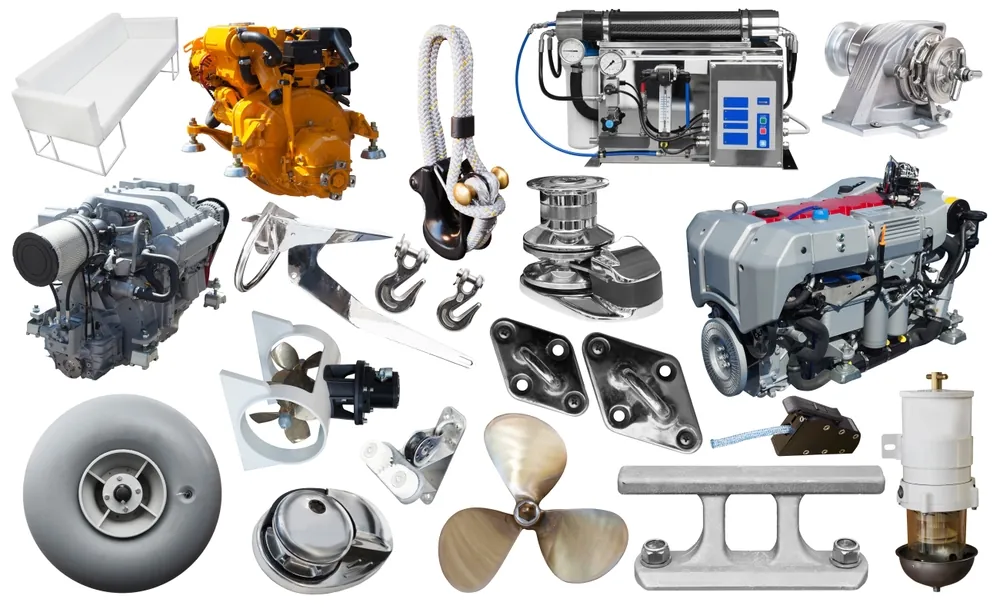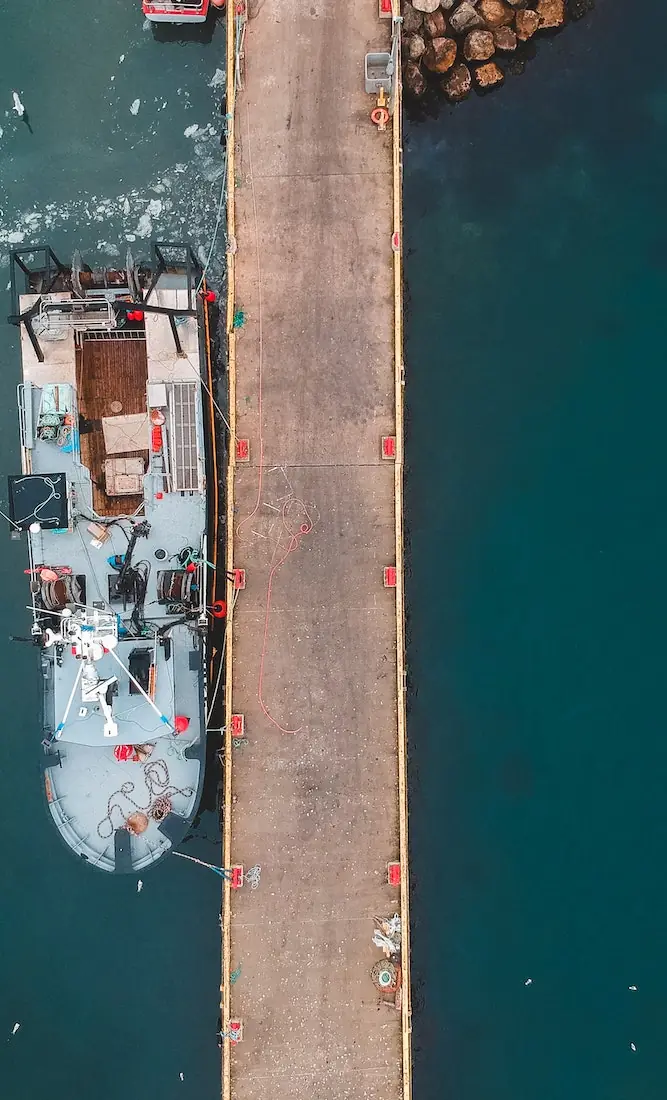
Shipping Marine Equipment and Supplies
FreightCenter is the perfect choice for shipping your Marine Equipment and Supplies.
What You Need to Know When Shipping Marine Equipment
Shipping marine equipment and supplies is an essential aspect of the maritime industry. Whether it’s shipping navigation systems, life-saving equipment, spare parts, or other supplies, it’s crucial to have a reliable and efficient shipping process in place.
At FreightCenter, we understand the unique requirements and challenges involved in shipping marine equipment and supplies, and we’re here to provide a comprehensive guide. This article will explore the key considerations for shipping marine equipment and supplies, provide packaging and documentation tips, and explain why FreightCenter is the ideal choice for your maritime shipping needs.

Key Considerations for Shipping Marine Equipment and Supplies
When shipping marine equipment and supplies, it’s important to keep the following key considerations in mind:
- Compliance with Regulations: The maritime industry is subject to various regulations and safety standards. Ensure that your shipments comply with all applicable rules, including those set by international maritime organizations and governing bodies. This includes obtaining the necessary permits, certifications, and approvals to transport specific marine equipment and supplies.
- Packaging for Protection: Proper packaging is crucial to safeguard marine equipment and supplies during transit. Use durable waterproof containers, such as crates, or specialized containers, to protect the items from moisture, impact, and other potential hazards. The cargo must be secured to a pallet for easy and safe movement. Consider utilizing cushioning materials, such as bubble wrap or foam, to provide additional protection and prevent movement within the packaging.
- Secure and Stabilize: Properly secure and stabilize the marine equipment and supplies within the packaging. Use straps, braces, or other appropriate securing mechanisms to prevent shifting or damage during transportation. This is especially important for larger, heavier items requiring additional support and stability.
- Documentation and Customs Compliance: Accurate documentation is essential for international marine equipment and supplies shipments. Ensure you have all the necessary shipping documents, including commercial invoices, packing lists, and customs forms. Provide detailed and precise descriptions of the shipped items to facilitate customs clearance and avoid delays.
How to Ship Marine Equipment and Supplies
Shipping marine equipment and supplies requires careful planning and adherence to certain guidelines. Here are the key steps to ship marine equipment and supplies efficiently:
- Packaging and Preparation:
– Use suitable packaging materials to protect the items during transit.
– Securely pack the marine equipment and supplies, ensuring they are properly cushioned and stabilized within the packaging.
– Follow manufacturer guidelines for packaging, if available, to ensure proper handling and protection.
- Documentation:
– Gather all necessary shipping documents, including commercial invoices, packing lists, and bill of lading.
– Provide accurate and detailed descriptions of the shipped items in the documentation.
- Choose the Right Transportation Mode:
– Consider the nature of the marine equipment and supplies to determine the most appropriate transportation mode (ground, air, or ocean).
– Evaluate factors such as speed, cost, and handling requirements to make an informed decision.
- Select a Reliable Freight Company:
– Research and choose a reputable freight company, like FreightCenter, with expertise in shipping marine equipment and supplies.
– Ensure the freight company has experience in handling specialized equipment and understands the specific requirements of the maritime industry.
- Request a Quote and Schedule the Shipment:
– Contact the freight company to request a quote for shipping your marine equipment and supplies.
– Provide accurate details about the items being shipped, including size, weight, and destination.
– Schedule the pickup once you have received the quote and agreed on the terms.
- Track and Monitor the Shipment:
– Utilize the tracking capabilities provided by the freight company to monitor the progress of your shipment.
– Stay in communication with the freight company for any updates or changes during transit.
By following these steps and partnering with a trusted freight company like FreightCenter, you can ensure a smooth and efficient shipping process for your marine equipment and supplies.
Cost to Ship Marine Equipment and Supplies
When it comes to shipping marine equipment and supplies, the cost can vary depending on several factors. Here are some key considerations that can influence the cost of shipping:
- Size and Weight: The size and weight of the marine equipment and supplies significantly determine the shipping cost. Larger and heavier items may require specialized handling and transportation, resulting in higher shipping expenses.
- Distance: The distance between the origin and destination is another important factor. Longer shipping distances generally incur higher costs due to increased fuel consumption, transportation time, and potential route complexities.
- Transportation Mode: Your transportation mode will also impact the shipping cost. Options include ground shipping, air freight, or ocean freight. Each mode has its own cost structure and associated factors to consider, such as speed, capacity, and accessibility.
- Packaging Requirements: Proper packaging is essential to protect marine equipment and supplies during transit. The packaging materials, such as crates, containers, or pallets, can add to the overall shipping cost.
- Additional Services: Additional services, such as insurance coverage, tracking capabilities, and expedited delivery, may incur extra charges but can provide added peace of mind and convenience.
To determine the specific cost of shipping your marine equipment and supplies, it is recommended to request a quote from FreightCenter or consult with our shipping experts. They will consider the unique characteristics of your shipment and provide you with an accurate cost estimate based on your requirements.
To create value for our customers by delivering customized shipping solutions that meet their unique needs and to fulfill shipping demands from simple to complex with expertise, guidance and ingenuity.
Trust the experts at FreightCenter to give you the best prices and the most comprehensive options for all your LTL freight shipping needs.
We deliver optimized solutions for full or partial truckloads and competitive dry van, flatbed, and refrigerated freight pricing. We can cover your full truckload shipping needs.
Nationwide Expedited Trucking services move your freight securely and rapidly. Your freight requires fast delivery; our freight shipping experts can get your shipment fast, whether in one large box or a full truckload.
The most reliable Specialized Freight Services rates from all the top carriers are just a few steps away. From white glove service to international shipping, we've got you covered.


Additional Tips for Shipping Marine Equipment and Supplies:
To ensure a smooth shipping process for marine equipment and supplies, consider the following packaging and documentation tips:
- Consult Manufacturer Guidelines: Consult the manufacturer’s guidelines and recommendations for packaging marine equipment and supplies. They often provide specific instructions on packaging materials, handling precautions, and any special considerations for transportation.
- Proper Labeling: Clearly label the packages with appropriate handling instructions, such as “Fragile,” “This Side Up,” or any specific warnings related to the content. Utilize labels and markings required by shipping carriers and regulatory agencies to ensure proper handling and compliance.
- Document Inventory: Maintain a detailed inventory of the marine equipment and supplies being shipped. This includes item descriptions, quantities, serial numbers (if applicable), and any relevant tracking information. This documentation helps streamline the shipping process and provides a reference in case of any issues or disputes.
- Customs Declarations: Ensure accurate and complete customs declarations for international shipments. Declare the value, origin, and purpose of the marine equipment and supplies accurately to facilitate customs clearance and avoid potential penalties or delays.
